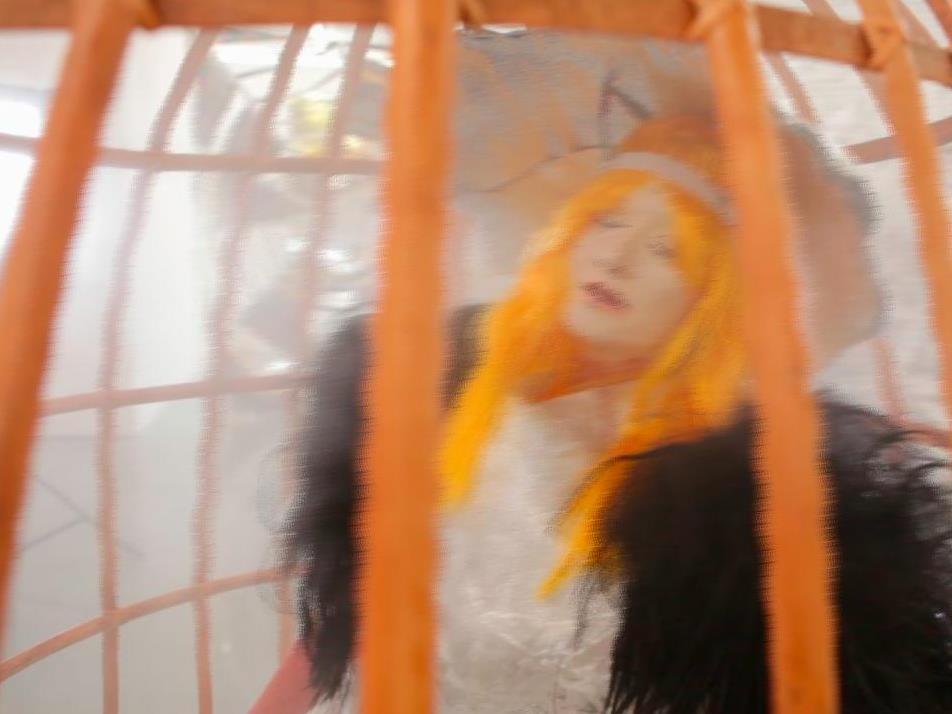Justene Williams, No mind (a performance in three parts) 2015 (detail). Three channel HD video. © Justene Williams, courtesy of Sarah Cottier Gallery, Sydney.
Exhibition titles are important. They set the tone and theme of a show; providing a coherency and unity between what at times may seem like a disparate group of works. But how should one go about interpreting an exhibition when the title itself presents something of a philosophical conundrum?
Jane Devery, curator of the exhibition Pleasure and Reality, presently showing at the Ian Potter Gallery, NGV Australia, argues that in fact ‘pleasure and reality aren’t mutually exclusive,’ but rather, ‘bleed into one another.’
Taken from a line in the artist’s statement by Marian Tubbs (one of the exhibiting artists), the title of this finely curated exhibition showcasing five contemporary Australian artists draws together recent works that explore new meanings in everyday images and objects through installation pieces, video, sculpture and painting.
Two cavernous rooms support these large scale pieces, allowing the artworks to comfortably occupy their space and the viewer to move freely around the works or reflect from a distance. Didactic panels provide greater context for the viewer by exploring the theme and giving insight into an individual artist’s practice.
The multisensory, recycled works of Justene Williams and Marian Tubbs dominate the first space. Referencing stylized performative elements of 14th century Japanese Noh theatre, Williams uses video to capture strange, immersive performances using elaborate sets and costumes from waste material in the body of works No Mind, (A performance in three parts), 2015, through single channel, high definition video. These ‘fabulist settings’ draw from myth and periods in art history to ‘reconstruct the essence of forgotten images and ghosts of past artists.’
Exploring philosophical notions ‘about culture and form’, Tubbs questions the intrinsic value of objects once they have been reformed or their context reimagined in Swan plain, 2015, made from glass, (found objects), cotton (towel), foam and steel. Glass moulds decorated with found objects are at once things of beauty and desire or discarded rubbish on the gallery floor. Referencing artists from Duchamp on the question of what constitutes a work of art and the idea of a ‘high and low’ art is postulated.
In her book Painting is a Critical Form, 2015, Helen Johnson cites the late 18th century philosopher Immanuel Kant, who suggests that aesthetic experience is implicitly connected to critical reflection. Drawing from this notion and other personal and cultural references, Johnson explores a range of political and cultural narratives in her graphically inspired painting Island (Gale), 2013 and the three looser unstretched canvases Passing through as a bee visiting flowers, Tripper and Watching a romcom after yoga, 2015: In these works she utilizes cartoon and caricature images to reference Australian history, the influence of American popular culture and how this informs our cultural identity.
Accompanying Johnson in the second space are the works of artist/experimental musician Nathan Gray and artist Tony Garifalakis whose works are arguably the most accessible on a visceral level. Gray’s multi-channel video installation Species of Spaces, 2013 -14 filmed in an abandoned factory on Cockatoo Island consists of a series of five screens presented in a circular arrangement, depicting fleeting sound and visual iconography. Like a mythical shrine the viewer finds herself in the centre of an immersive visual sound scape created from old bits of corrugated iron, rusted hinges or a violin bow. Beautifully formed compositions focusing on colour, form and texture speak of the ephemerality of all things and the pleasure of the senses.
Overtly political Garifalakis’ Bloodline series, 2014, made from enamel paint on C-type prints, consists of a suite of 12 portraits from Britain’s royal family; identities such as Princess Diana, Princess Anne and Camilla Parker-Bowles, have had their individuality erased, black enamel paint covering their faces mask-like with only eyes and adornments of wealth visible. By ‘defacing,’ Garifalakis takes away the notion of individual identity, creating ‘one indistinguishable alien mob’; however by taking away one reality, he creates another.
‘Remove a layer of information, and images take on a sinister effect,’ says Devery. ‘The line between pleasure and reality is intentionally quite ambiguous in these artist’s work…it falls somewhere between alluring and alarming.’
As you make your way to this intriguing and thought provoking exhibition be mindful of the fact it will require time to become fully immersed in the work on show. So why not take the stairs, located at the end of the ground floor and make your way slowly to level three, contemplating as you go your own notions of what may constitute ‘pleasure’ and ‘reality’.
Rating: 3 ½ stars out of 5
Pleasure and Reality
The Ian Potter Centre: NGV Australia
Federation Square, Melbourne
18 September – 16 February 2016





